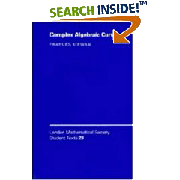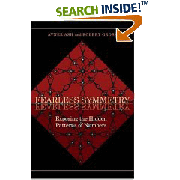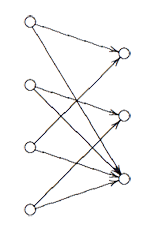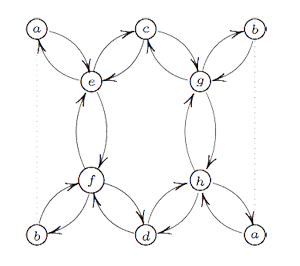Im in the process of writing/revising/extending the course notes for next year and will therefore pack more math-books than normal.
These are for a 3rd year Bachelor course on Algebraic Geometry and a 1st year Master course on Algebraic and Differential Geometry. The bachelor course was based this year partly on Miles Reid’s Undergraduate Algebraic Geometry and partly on David Mumford’s Red Book, but this turned out to be too heavy going. Next year I’ll be happy if they know enough on algebraic curves. The backbone of these two courses will be Fulton’s old but excellent Algebraic curves. It’s self contained (unlike Hartshorne’s book that assumes a prior course on commutative algebra), contains a lot of exercises and goes on to the Brill-Noether proof of Riemann-Roch. Still, Id like to extend it with the introductory chapter and the chapters on Riemann surfaces from Complex Algebraic Curves by Frances Kirwan, a bit on elliptic and modular functions from Elliptic curves by Henry McKean and Victor Moll and the adelic proof of Riemann-Roch and applications of it to the construction of algebraic codes from Algebraic curves over finite fields by Carlos Moreno. If time allows Id love to include also the chapter on zeta functions but I fear this will be difficult.
These are to spice up a 2nd year Bachelor course on Representations of Finite Groups with a tiny bit of Galois representations, both as motivation and to wet their appetite for elliptic curves and algebraic geometry. Ive received Fearless Symmetry by Avner Ash and Robert Gross only yesterday and find it hard to stop reading. It attempts to explain Galois representations and generalized reciprocity laws to a general audience and from what I read so far, they really do a terrific job. Another excellent elementary introduction to elliptic curves and Galois representations is in Invitation to the Mathematics of Fermat-Wiles by Yves Hellegouarch. On a gossipy note, the appendix “The origin of the elliptic approach to Fermat’s last theorem” is fun reading. Finally, Ill also take Introduction to Fermat’s Last Theorem by Alf van der Poorten along simply because I love his writing style.
These are included just for fun. The Poincare Conjecture by Donal O’Shea because I know far too little about it, Letters to a Young Mathematician by Ian Stewart because I like the concept of the book and finally The sensual (quadratic) form by John Conway because I need to have at all times at least one Conway-book nearby.
Leave a Comment








 Here, the vertex spaces on the left are the iso-typical factors of $V \downarrow_{D_2} $ and those on the right those of $V \downarrow_{D_3} $ and the arrows give the block-components of the $C_2 $-isomorphism $\phi $. The nice things is that one can also reverse this process to get all $\tilde{\Gamma} $-representations from $\theta $-semistable representations of this quiver (having the additional condition that the square matrix made of the arrows is invertible) and isomorphisms of group-representation correspond to those of quiver-representations!
Here, the vertex spaces on the left are the iso-typical factors of $V \downarrow_{D_2} $ and those on the right those of $V \downarrow_{D_3} $ and the arrows give the block-components of the $C_2 $-isomorphism $\phi $. The nice things is that one can also reverse this process to get all $\tilde{\Gamma} $-representations from $\theta $-semistable representations of this quiver (having the additional condition that the square matrix made of the arrows is invertible) and isomorphisms of group-representation correspond to those of quiver-representations! If one calculates the ‘clan’ of these 8 simples one obtains the double quiver of the graph on the left. Note that a and b appear twice, so one should glue the left and right hand sides together as a Moebius-strip. That is, the clan determining the representation theory of the extended modular group is a Moebius strip made of two hexagons!
If one calculates the ‘clan’ of these 8 simples one obtains the double quiver of the graph on the left. Note that a and b appear twice, so one should glue the left and right hand sides together as a Moebius-strip. That is, the clan determining the representation theory of the extended modular group is a Moebius strip made of two hexagons!